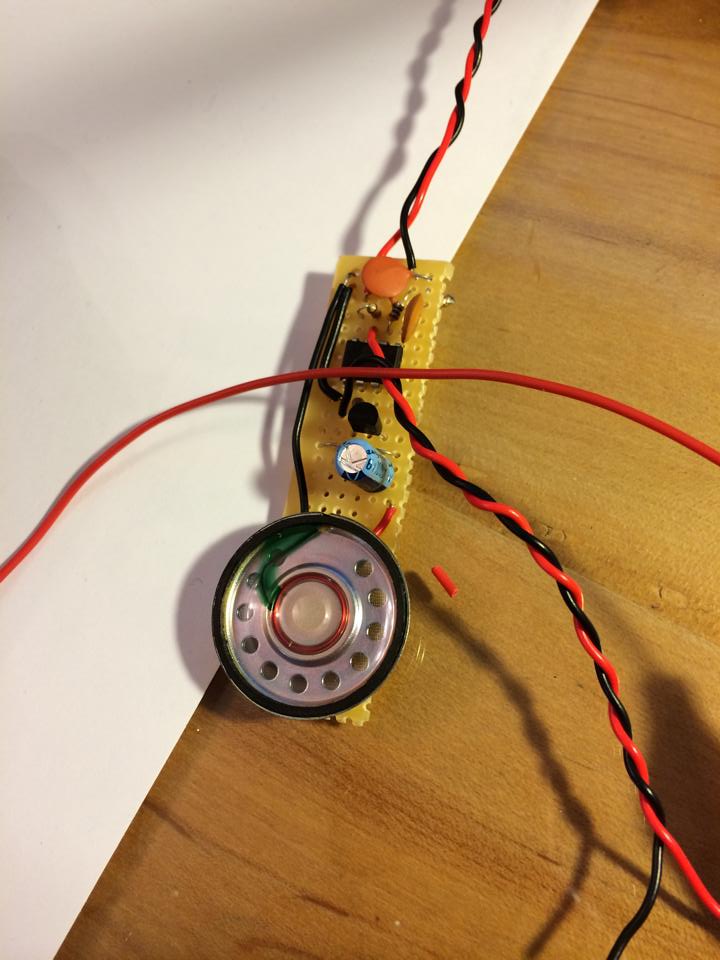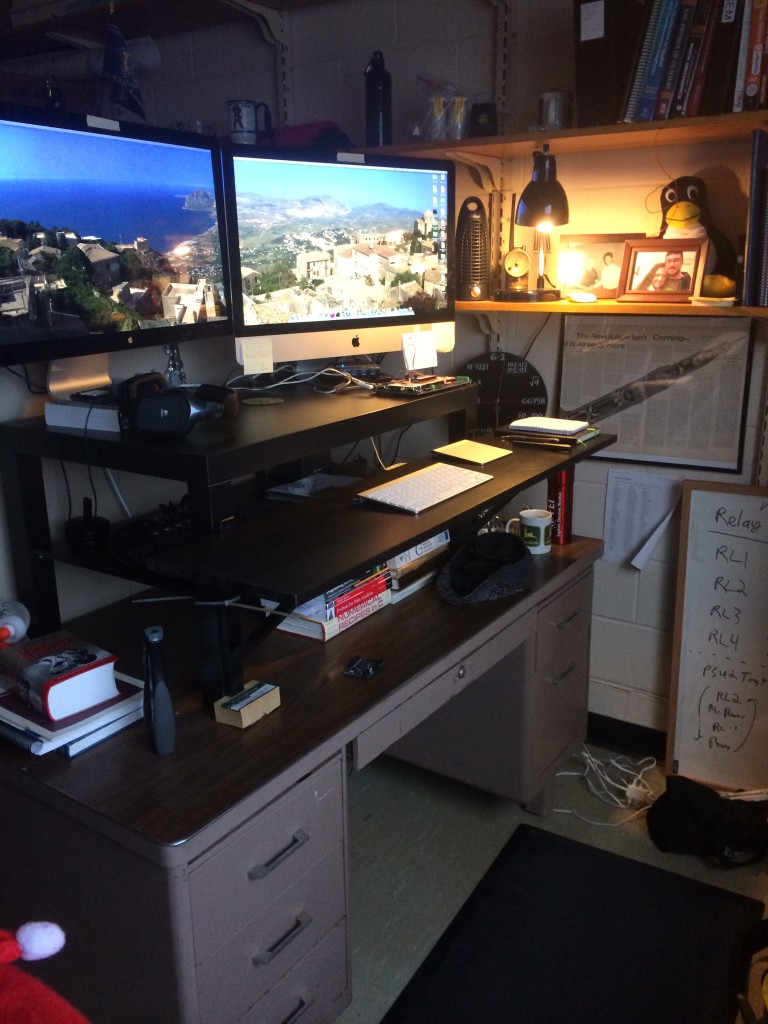Awhile back I saw a post from the folks at the MIT Media Lab on a little creation they called the "drawdio" (here). This looked like a fun little project! It's an oscillator based on the classic 555 timer integrated circuit, but with a twist. The twist is that you can control the frequency of the oscillation (tone of the note played by a speaker) by varying the resistance between two contacts. These contacts seem to commonly be a pencil lead and your body, but as the MIT website demonstrates, almost anything can be used.
I decided it was time to build one of these, so I headed over the MAKE to get the plans. I already had most of the parts (or good substitutes) on hand. The battery holder and enclosure would have to come later. I built the circuit with simple point-to-point wiring on perforated board. The speaker is a salvaged part from a fax machine!
I plugged the power supply in a touched the signal wires together. The speaker let out a shrill tone and we were in business. The next challenge was figuring out a case a final setup for the device. I wanted this to be durable since lots of people at work and home would be playing with it. The solution ended up being hot glue and a plastic crayon case. I drilled holes in the case above the speaker for sound and added a power switch. The final touch was terminal posts for the sense wires that control the pitch.
To make the sensor I just wrapped bare wire around a pencil body for one contact and inserted a push pin into the lead at the top for a second contact. The goal is to complete that circuit and change the resistance between the two contacts. The easiest way is to draw a graphite track on paper and make the circuit through your hands. See the demo video below.
This is an incredibly fun project and can be very educational to the beginning electronics hobbyist or a way to get school children interested in STEM fields. What are you waiting for? Go build a drawdio! (Kits available from Adafruit)



